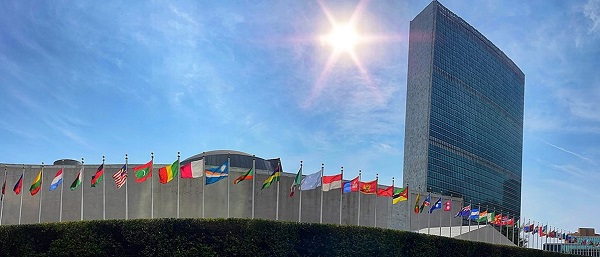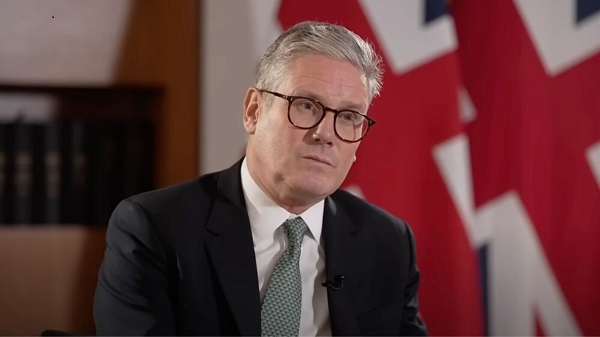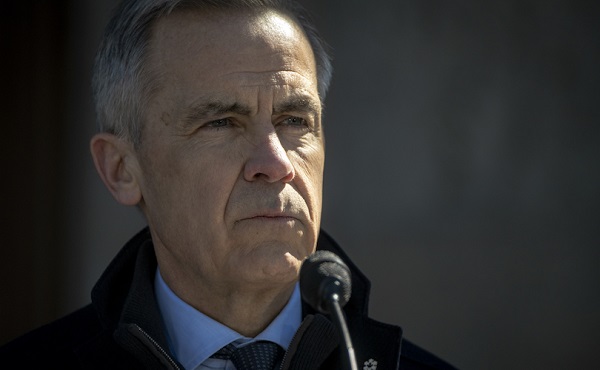Alberta
No Permission Required: Alberta Will Protect Its Daughters
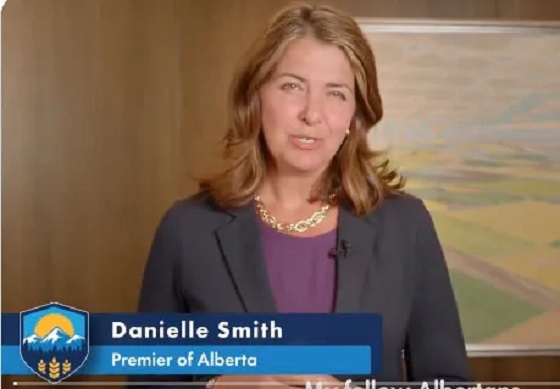
Section 33 Is a Legitimate Democratic Instrument
Tell everyone. There is no Charter right for a biological male to compete against females in women’s sports. Nor is there a constitutional right for children to be maimed and rendered sterile in service to self-proclaimed identities. And there is certainly no excuse for a government in Ottawa to interfere with provinces’ ability to defend women and girls from the fallout of sexual fetishism dressed in federalist drags.
Yet here we are.
Albertans are being invited to ask an important question. When rights collide, should we trust the flawed judgment of elected officials who face the people every few years, or surrender that authority to similarly flawed judges selected in near secrecy, immune to removal, and uninterested in the lived realities of the citizens they affect?
Section 33 of the Charter—the “notwithstanding clause”—exists for precisely this purpose. It was never a loophole. It was a constitutional safeguard demanded by Premiers like Alberta’s Peter Lougheed and Saskatchewan’s Allan Blakeney. It was their condition for agreeing to the Trudeau Charter in 1982, a shield for legislatures to retain sovereignty in cases where Ottawa-appointed, unelected courts would push too far into political life. It was a tool to defend provincial uniqueness against Ottawa’s homogenizing power.
Blakeney explained it plainly. Where judicial rulings lead to outcomes that might cause undue harm, for example, legislatures must retain the right to legislate, even if a court believes a Charter right has been breached. It was an elegant way to deal with the inevitable tension between rights adjudicated by judges and those protected by governments chosen by the people. It was a way to guarantee democracy over legal technocracy. The hysterical NDP machine will have people believe it is also the legislation of cruelty.

Section 33 is a temporary mechanism—suitable for five years, renewable only through re-legislation. Whatever the progressives say, it does not override or erase any rights. It cannot be used in secret, and any government that invokes it must defend its choice publicly. That is democratic accountability. The people can debate it (and we now where the contemporary left stands on debating), throw the government out, or demand that the law be changed, if they so choose.
This safeguard is now essential. Alberta is acting to protect the integrity of women’s sports and spaces. Who would be against protecting their daughters? Girls have lost competitions, lost scholarships, and in some cases been physically injured competing against males who claim to be female. These are not hypotheticals. They are real, measurable harms—harms progressive politicians and the courts are at times unwilling to recognize. Alberta’s proposed protections have drawn fierce opposition from progressive ideological activists and their allies in the press and the federal parliament, who now claim that such laws are contrary to the Charter. They seek to keep imposing without open debate the fiction that there is a Charter right for a biological male to compete against females in women’s sports.
There is no such right, and it doesn’t exist in the Charter. The Charter was not drafted to validate identity fantasies. It was not written to erase biological sex or enshrine the right of middle-aged men to force immigrant women to handle their genitals. It was not intended to give minors access to irreversible surgeries without the knowledge or consent of their parents. These things are being “read into” the Charter by tribunals and activist judges trained in Laurentian law schools with no democratic mandate, often under pressure from a woke federal government happy to let the courts advance policies it wants but is afraid to pass through Parliament.
Naheed Nenshi has made it clear where he stands. He bluntly opposes the use of Section 33 to protect Alberta women and girls. His allegiance is to the same cultural current that waddles through Ottawa. He speaks the language of progress but misses the point entirely. This isn’t about political posturing. It is about protecting girls and women from being injured, marginalized, and erased to satisfy the ideological demands of his political base.
It is about affirming the constitutional prerogative of Alberta’s legislature to protect its jurisdictional sphere. This is about facing anti-scientific postures with courage and preserving truth: men aren’t women, no matter how much ideological poultry progressive voodoo priests sacrifice to affirm it.
Ottawa’s interest in neutering Section 33 is not born of a deep commitment to human rights. It is a power play. The Trudeau-era delusional policies and its Carney-extended government see in Section 33 an obstacle to the court-driven social revolution it has vigorously encouraged. It wants provinces disarmed. Not through constitutional amendment, which would require tough negotiating, broad agreement and transparency, but through attrition—by shaming any use of the clause and suggesting that invoking it is inherently illegitimate. But that federal poodle won’t hunt in Alberta.
Ottawa already has the power to disallow provincial legislation outright under Section 90 of the BNA Act, 1867. That power—known as disallowance—allows the federal cabinet to kill any provincial law within a year of its passage. It has not been used since 1943, not because it is illegal, but because it is politically toxic. If Ottawa were to disallow an Alberta or Saskatchewan law protecting girls’ sports or parental rights, the backlash would be immediate and overwhelming. Progressives prefer pushing their ideological agendas in the dark, through political smoke curtains, behind close doors.
The federal government would rather pretend it lacks power while trying to strip away the strongest tool provinces have to protect their constitutional space. Section 33 is a scalpel compared to Ottawa’s sledgehammer, but it is a scalpel that Ottawa doesn’t want the provinces to use because it limits the power of the judges they appoint.
And let us not pretend this kind of judicial overreach is limited to social policy. Just a few years ago, the Supreme Court had the opportunity to strike down Canada’s tangle of interprovincial trade barriers in the Comeau case (2018). The question was straightforward: does Section 121 of the Constitution, which says goods “shall be admitted free” between provinces, actually mean what it says?
The Court answered no. It chose legal technicalities over the clear, economic intent of the BNA Act. In doing so, it upheld a regime of trade barriers that make Canada’s internal economy more balkanized. Donald Trump’s tariffs have nothing on the now court-preserved domestic trade barriers.
While the courts did not impose the regime of inter provincial blockages, it was the last to endorse it, weakening the country. Canadians cannot freely ship beer or wine across provincial lines. Businesses face duplicated regulations and supply chains carved up by provincial restrictions. The result is a sluggish, over-regulated economy that punishes ordinary citizens while rewarding monopolies and gatekeepers.
The Comeau decision was a betrayal of Confederation. It was also a reminder of the deeper problem: judges, however skilled, are not elected. That doesn’t make them bad people, but they are not accountable. The current Chief Justice, who condemned the truckers’ protest knowing legal cases would be coming active challenging the COVID lockdowns, openly advocated for stronger federal power. He is not neutral. And even if he were, he remains unaccountable to the people of Alberta. His political judgment carries no democratic legitimacy, yet it shapes the rules under which we are expected to live.
This is why Section 33 must be preserved—and used. But whether or not it is used legitimately in Alberta, it is for Albertans to determine. Not Ottawa. The threat isn’t coming from Alberta’s legislature—it’s coming from courts and bureaucrats choosing to advance male fetish desire as sacred while erasing female safety.
Premier Danielle Smith understands this. So does Premier Scott Moe. That is not judicial defiance. That is democratic responsibility. When Ottawa and the NDP opposition in both provinces seek to override parental rights, deny biology, and impose ideology on children, women, and families, it is the perfect time for legislatures to act. And if not legislatures, then who?
Albertans should not have to ask permission from Ottawa to protect their daughters. They should not have to wait years for a judge’s approval to define women’s places and spaces. They should not be ruled by edicts from individuals who have never faced a voter in their lives.
Section 33 is a lawful democratic instrument. It exists to ensure that provinces do not lose control over essential provincial matters. Alberta is using it for precisely the reason it was designed—to uphold the will of its people in the face of potential judicial activism that favours anti-scientific ideology above reality.
No permission is required. Alberta will protect its daughters.
Haultain Research is a reader-supported publication.
To receive new posts and support our work, consider becoming a free or paid subscriber.
Alberta
How Alberta is moving to speed up oil sands reclamation with mine water treatment
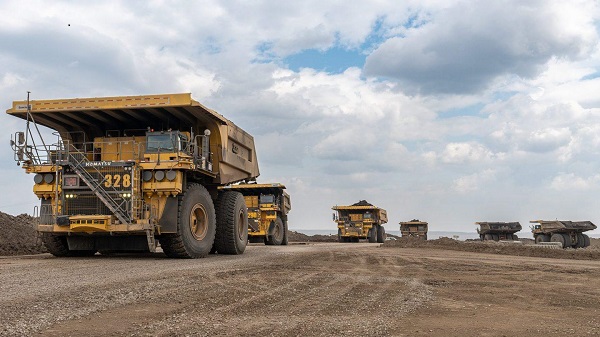
From the Canadian Energy Centre
New standards to build on rules already in place for other mining sectors
In what the former Chief of the Fort McKay First Nation calls “a critical step in the right direction,” the Alberta government is moving to accelerate reclamation of more than 1.3 trillion litres of water stored in oil sands tailings ponds.
On Sept. 5, the province announced it will expedite setting standards that allow for “mine water” to be treated and released into the environment, building on the rules that are already in place for other mining operations across Canada.
“We cannot ignore this challenge, we need to keep working together to find practical and effective solutions that protect Indigenous rights, people and the environment,” said Chief Jim Boucher, a member of Alberta’s Oil Sands Mine Water Steering Committee.
That committee is behind a suite of nine recommendations that Alberta is putting into action to improve mine water management and tailings pond reclamation.
The Mining Association of Canada (MAC) says decades of research give the industry confidence that mine water can be safely treated and released once regulations are in place.
But that will take the federal government moving faster too.
Both the federal and provincial governments play a role in potential regulations for the treatment and release of oil sands mine water.
“Alberta is proposing science-based parameters to ensure the safe return of treated water used in oil sands mining, just as other provincial governments do for their respective mining sectors,” MAC CEO Pierre Gratton said in a statement.
“We are hopeful that this will accelerate the development of federal regulations – which we requested almost 15 years ago – to be similarly advanced.”
Gratton said setting standards for safe mine water release could unlock “significant investments” in oil sands reclamation and water treatment.
What are tailings ponds?
Tailings are a byproduct of mining operations around the world.
Oil sands tailings ponds are engineered basins holding a mix of mine water, sand, silt, clay and residual bitumen generated during the extraction process. There are eight operating oil sands mines with tailings ponds in northern Alberta.
Recycling water held in these basins helps operators reduce the amount of fresh water withdrawn from the Athabasca River.
In 2023, 79 per cent of the water used for oil sands mining was recycled, according to the Alberta Energy Regulator.
What is oil sands mine water?
Oil sands mine water is water that comes into contact with the various stages of oil sands mining operations, including bitumen extraction and processing.
Tailings ponds in the oil sands also hold water from significant amounts of rain and snow collected in the decades since the first mines began operating.
While the oil sands mining sector has reduced the amount of fresh water it uses per barrel of oil produced by nearly one-third since 2013, the total volume of mine water in tailings storage has grown as production has increased.
What’s in oil sands mine water?
The constituents of oil sands mine water requiring treatment for safe release are both typical of water in other industrial processes and unique to the oil sands sector.
MAC says common materials are suspended solids like sand, silt and clay, as well as a range of metals. These can be treated by a wide range of proven technologies already in use in Canada and globally.
Unique to oil sands mine water are organic compounds such as naphthenic acids. According to MAC, operators have demonstrated and continue to invest in processes to treat these to levels safe for environmental release.
How does mine water impact reclamation?
At the end of an oil sands mine’s life, operators must remove all infrastructure and restore the land to features of a self-sustaining boreal forest similar to what was there before.
Addressing the challenge of tailings ponds and the mine water stored in them is critical to the overall success of oil sands mining reclamation.
Why is mine water release important?
MAC says the only way to remove mine water in tailings ponds is to treat it for safe release to the environment.
Strict regulations allow for this process across Canadian copper, nickel, gold, iron ore, and diamond mining operations. But it is prohibited in the oil sands.
The safe release of treated oil sands mine water into the environment can reduce the need to store it, minimize further land disturbance and help reclamation happen faster.
MAC says operators have shown they can treat mine water to safe release levels, using processes that include innovative technologies developed through Canada’s Oil Sands Innovation Alliance.
What is Alberta doing?
Alberta has accepted the Oil Sands Mine Water Steering Committee’s nine recommendations aimed at speeding up solutions for safe mine water release.
The province says the recommendations, developed with input from industry, technology providers, Indigenous communities and scientists, will now be evaluated to determine how they can be put into practice.
Alberta
Premier Smith directs ministers to grow economy and create jobs
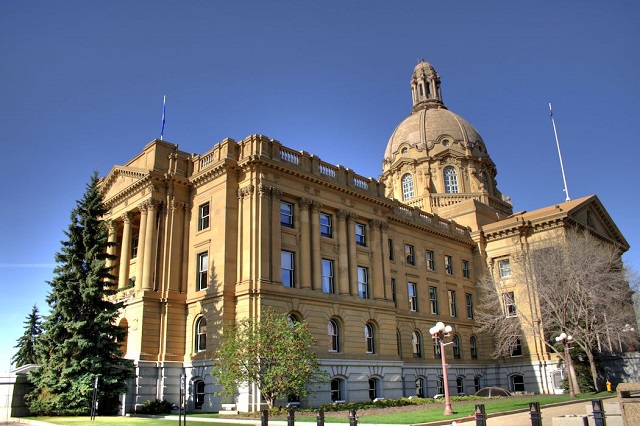
Premier Smith has issued new mandate letters to several ministers. Minister of Jobs, Economy, Trade and Immigration Joseph Schow will push for Alberta to set its own immigration levels and expand youth job programs. Minister of Forestry and Parks Todd Loewen will strengthen wildfire protections and open more recreation opportunities. Minister of Tourism and Sport Andrew Boitchenko will expand year-round tourism and implement the Fairness and Safety in Sport Act to ensure women and girls have the opportunity to compete in biological female-only divisions. Minister of Arts, Culture and Status of Women Tanya Fir will expand Alberta Day, showcase the provincial flag more prominently, and improve supports for survivors of domestic violence.
Alberta’s Minister of Jobs, Economy, Trade and Immigration Joseph Schow, Minister of Forestry and Parks Todd Loewen, Minister of Tourism and Sport Andrew Boitchenko and Minister of Arts, Culture and Status of Women Tanya Fir have been tasked with promoting Alberta’s industries, driving investment, creating jobs and increasing prosperity for people who live in Alberta.
The new mandate letters are focused on delivering the programs and supports that matter to Albertans, Alberta companies, workers and the economy, while maintaining Alberta as the best place to live, work and raise a family.
Through the commitments outlined in each mandate letter, Alberta’s ministers will deliver results, strengthen communities and build a future rooted in prosperity, opportunity and responsible governance.
“A resilient and diversified economy is one of our top priorities and what Albertans expect from their government. We are creating the conditions for workers and industries in Alberta to keep growing – by supporting investments where they are needed and reducing barriers that stifle innovation and expansion.”
Jobs, Economy, Trade and Immigration
The Premier tasks Minister Joseph Schow with:
- Using every legal and policy tool to gain greater provincial authority over immigration, setting sustainable levels that prioritize economic migrants, and ensuring young Albertans have access to jobs. Expanding programs to reduce youth unemployment, developing talent pipelines and helping newcomers integrate successfully.
- Attracting major domestic and international investment by coordinating with partners, reviewing and improving incentive programs, increasing the Investment and Growth Fund and aligning investment attraction agencies with Alberta’s long-term economic goals.
- Defending Alberta’s interests in federal trade negotiations, implementing and managing trade agreements and supporting Alberta businesses to expand into new global markets through trade missions and services.
- Collaborating with ministries and partners to expand airport capacity and connectivity, supporting value-added forestry initiatives, growing Alberta’s cultural industries and securing public and private investment in defense-related and other strategic infrastructure projects.
“Alberta continues to stand out as the best place to do business. Our government’s work is leading to a stronger economy, more jobs and more opportunity for those who call Alberta home. I am honoured to accept this mandate given to me by Premier Smith to continue this growth for Alberta, keeping our province strong and free.”
Forestry and Parks
The Premier tasks Minister Todd Loewen with:
- Securing a federal partnership for wildfire mitigation on federal lands, especially in national parks, and advancing proactive fire management through strategic harvesting, fuel reduction, expanded FireSmart programs, new technology and modern firefighting equipment.
- Finalizing and implementing the new strategy to expand public access to natural spaces responsibly, while continuing to add new campsites, trails and recreation opportunities, and upgrading infrastructure in high-traffic areas like Kananaskis, Canmore and Crowsnest Pass.
- Remaining committed to a common-sense approach to maintain healthy wildlife populations and guide ministry practices related to fish and game management.
- Proposing a value-added tax incentive for forestry products and enabling more public land use opportunities through private and community partnerships.
“The beautiful outdoors of our province feels like home for many Albertans. Our government is continuing its work to make sure that the land we have all grown up loving will stay strong for Albertans today and for future generations”
Tourism and Sport
The Premier tasks Minister Andrew Boitchenko with:
- Maintaining progress on expanding opportunities for sustainable year-round tourism in the Alberta Rockies with all-season resorts.
- Ensuring the full implementation of the Fairness and Safety in Sport Act, using every legal and constitutional tool available to defend Alberta athletes and guarantee a level playing field.
- Respecting taxpayer dollars by creating a new provincial bidding policy to oversee future bids to host international and national sport events and working with Treasury Board and Finance to ensure visitors contribute fairly to taxes and fees.
- Continuing to work with Travel Alberta to unleash Alberta’s potential and reach the ambitious goal of $25 billion in visitor spending.
“Premier Danielle Smith has made my mandate clear; grow Alberta’s visitor economy and ensure our province continues to be the best place to live, work, visit and play. We have already had great success, and I am excited to keep that ball rolling as we work to strengthen Alberta’s tourism and sport sectors. Albertans elected us to get the job done and that’s exactly what I intend to do.”
Arts, Culture and Status of Women
The Premier tasks Minister Tanya Fir with:
- Continuing to work with the Minister of Jobs, Economy, Trade and Immigration to grow Alberta’s cultural industries including music, television, film and other performing arts.
- Maintaining progress on promoting and celebrating Alberta’s unique cultural identity and heritage, including identifying opportunities to more prominently display our provincial flag and motto across the province while significantly growing the size and scope of Alberta Day celebrations.
- Remaining committed to collaborating with First Nations throughout the province that wish to repatriate items identified as belonging to their nations, including the implementation of the new repatriation framework.
- In cooperation with the Minister of Children and Family Services, pushing forward on developing and implementing supports for victims of domestic violence.
“Our government has a clear vision for Alberta’s arts, culture and heritage sectors to ensure they remain central to our economy, identity and communities. Through this mandate, I will continue leading initiatives that celebrate who we are, create more opportunities in cultural industries, collaborate with First Nations partners and support survivors of gender-based violence.”
-

 Business2 days ago
Business2 days agoCanada’s ‘supply management’ system makes milk twice as expensive and favours affluent dairy farms
-
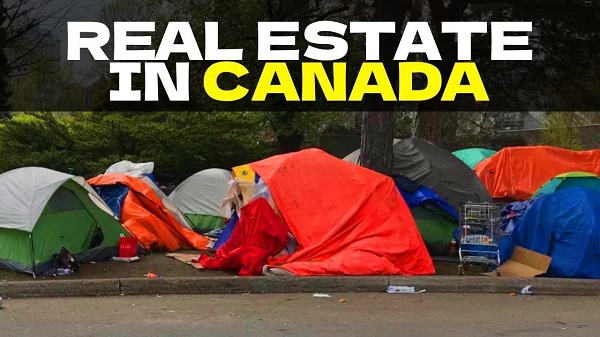
 Bruce Dowbiggin2 days ago
Bruce Dowbiggin2 days agoCarney’s Housing Meltdown: Building A Mystery
-
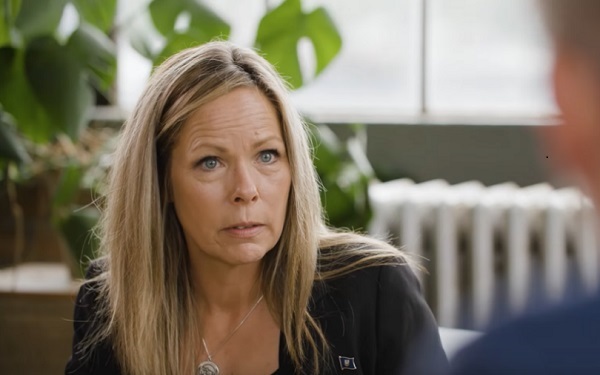
 COVID-192 days ago
COVID-192 days agoFreedom Convoy leader Tamara Lich puts her ‘trust’ in Jesus while awaiting sentencing
-

 Business16 hours ago
Business16 hours agoEnergy leaders send this letter urging Prime Minister Mark Carney to unlock Canada’s resources
-
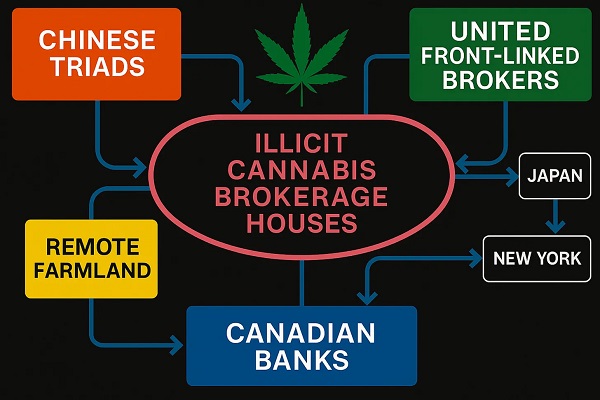
 Crime2 days ago
Crime2 days agoFrom Vancouver to Oklahoma: Canadian Murder Case and CCP ‘Police Station’ Links Align U.S. Testimony and The Bureau’s PRC Pot Investigations
-

 International1 day ago
International1 day agoTrump vows to reclaim Afghanistan air base after Biden’s botched exit
-

 Alberta16 hours ago
Alberta16 hours agoPremier Smith directs ministers to grow economy and create jobs
-

 COVID-1916 hours ago
COVID-1916 hours agoQuebec ends free distribution of COVID shots


